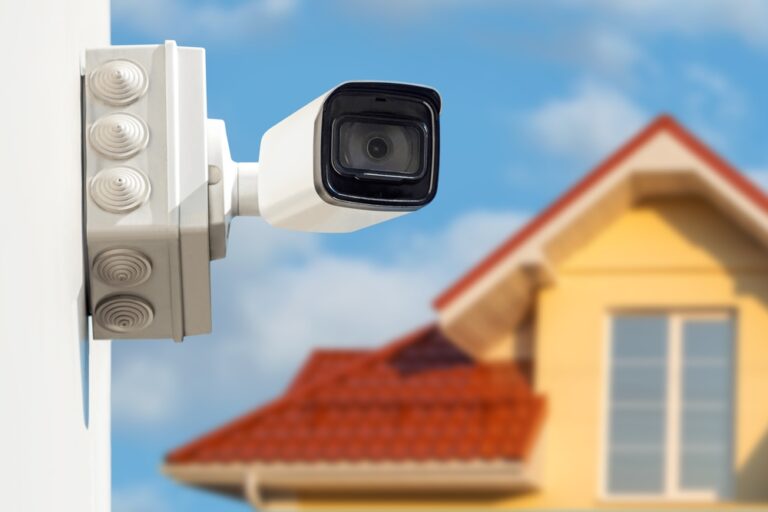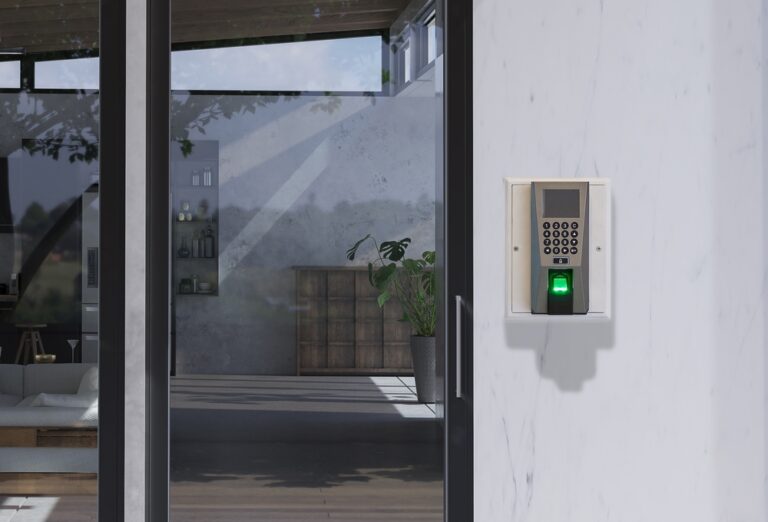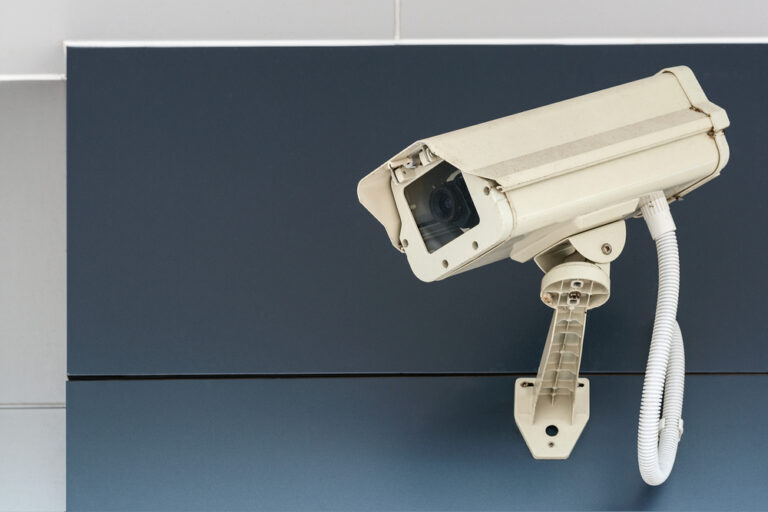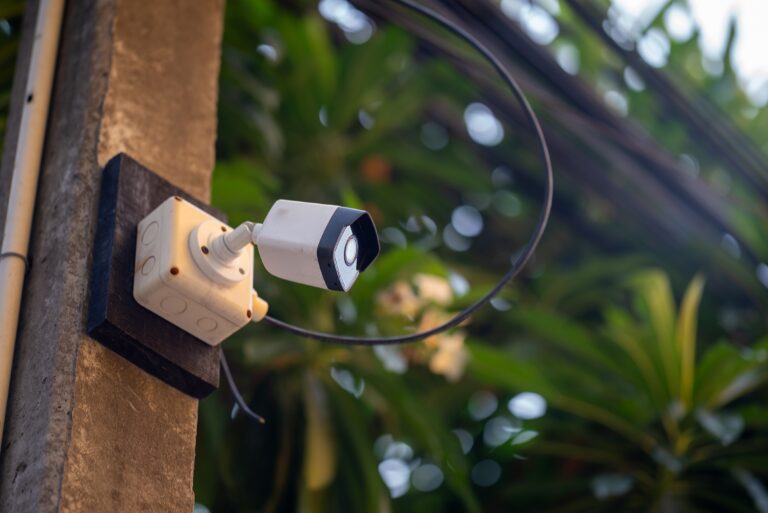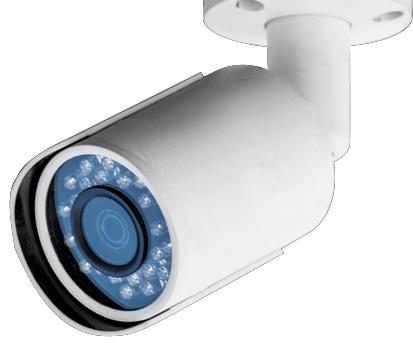- 1) Introduction
- 2) The Evolution of Security Cameras and Their Capabilities Beyond Surveillance
- 3) The Pivotal Role of the Cloud in Expanding Security Cameras’ Capabilities
-
4)
Diverse Examples of Innovative Security Camera Uses Across Industries
- 4.1) Retail – Avigilon Cameras Enhancing Operations at Super Dry Stores
- 4.2) IT – LiveAction’s Visibility as a Service Uses Existing Cameras
- 4.3) Fire Safety – Alcatraz AI’s Computer Vision Fire Detection Camera
- 4.4) Government – Eagle Eye Networks and ImmixGroup Partnership
- 4.5) Industrial – ClanTect’s Wearable Heartbeat and Video Detector
- 4.6) Critical Infrastructure – Mitie Acquisition of GBE Converge
- 4.7) Military – IDNow Transitioning Vision AI Expertise to Skills Testing
- 4.8) Supply Chain – HID Opening Logistics Center in Ireland
- 5) Unique Benefits of Infrared Cameras Across Industries
- 6) Critical Components Beyond Cameras for Industrial Video Systems
- 7) Key Differences Between IP and Analog Security Cameras
- 8) Key Considerations for Reliable Industrial Video Surveillance
- 9) Optimizing Industrial Video Systems for Maximum Efficiency
- 10) Conclusion: Leveraging Security Cameras’ Full Potential Across Industries
-
11)
FAQs
- 11.1) What are some key benefits of modern IP-based security cameras versus old analog CCTV systems?
- 11.2) How can security cameras help improve efficiency and operations in industrial facilities?
- 11.3) What additional components beyond cameras are needed for an effective industrial video surveillance system?
- 11.4) Why are infrared cameras useful for non-security purposes?
- 11.5) How does cloud connectivity enhance the capabilities of modern security cameras?
- 11.6) What challenges must be addressed when implementing cameras in large industrial facilities?
Introduction
Security cameras have become an integral part of security systems, providing surveillance and monitoring for retail stores, public spaces, workplaces, and more. But modern security cameras are capable of far more than just basic surveillance. Recent technological advancements like cloud connectivity, infrared imaging, and artificial intelligence have greatly expanded the versatility and utility of security cameras across many industries.
Security cameras now have capabilities to take on diverse roles ranging from operations monitoring and compliance to inventory tracking and workplace safety. As security cameras evolve to have expanded functionality, companies in manufacturing, warehousing, cannabis, government, retail, and more are finding new innovative uses for network-connected cameras.
In this post, we’ll take a deeper look at some of the key advancements that have powered security cameras beyond just security. We’ll also highlight real-world examples of industries deploying cameras in unconventional ways to solve problems, improve safety, increase efficiency, and gain greater visibility into their environments and operations.
The Evolution of Security Cameras and Their Capabilities Beyond Surveillance
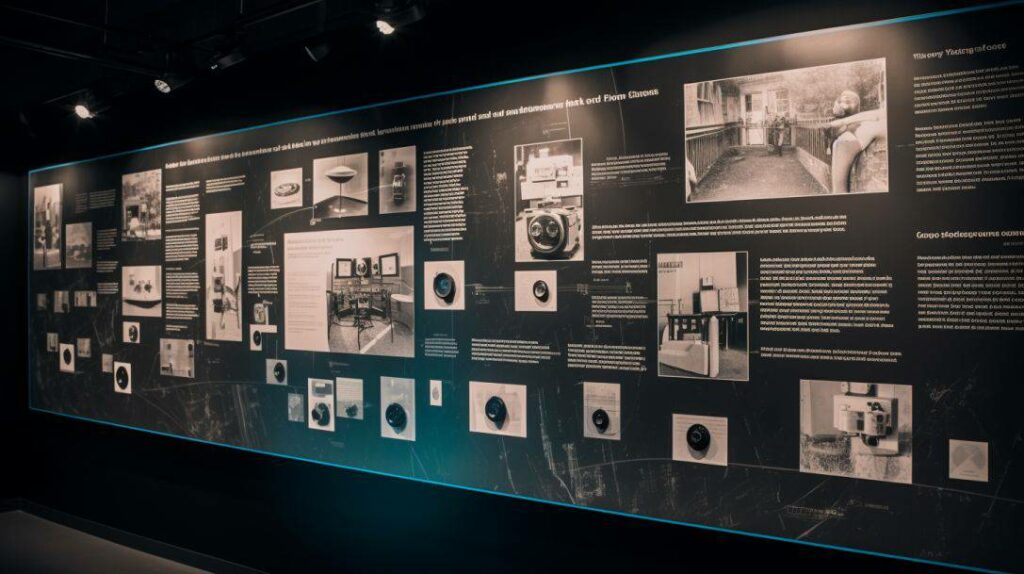
The security camera landscape has changed dramatically in just the past decade. We’ve seen significant improvements in areas like:
- Video resolution – From analog CCTV to 4K ultra HD clarity on IP cameras.
- Networking – Wired and wireless capabilities for remote access and centralized management.
- Intelligent analytics – AI and deep learning for advanced event detection and insights.
- Infrared imaging – Seeing in total darkness for 24/7 visibility.
- Ruggedized options – Vandal-proof and weather-resistant cameras.
With these advancements, modern security cameras are empowered to take on diverse new roles:
- Operations monitoring – Optimizing workflow, inventory, merchandising, etc.
- Safety and compliance – Enforcing proper procedures and responding quickly to incidents.
- Equipment tracking – Monitoring valuable assets and preventing loss.
- Logistics optimization – Coordinating personnel, inventory, and vehicles across facilities.
- Skills training – Recording exercises for later coaching and improvement.
And this is just the beginning. The continued integration of AI, edge computing, 5G networks and other innovations will further expand security cameras’ capabilities and applications in the years ahead.
Forward-thinking companies are recognizing the vast potential of smarter security cameras to help solve pressing business problems. Implemented properly, they provide unmatched visibility and insights to enhance operations, safety, efficiency, and productivity across diverse industries.
In the next section, we’ll highlight some real-world case studies of companies deploying security cameras far beyond just security.
The Pivotal Role of the Cloud in Expanding Security Cameras’ Capabilities
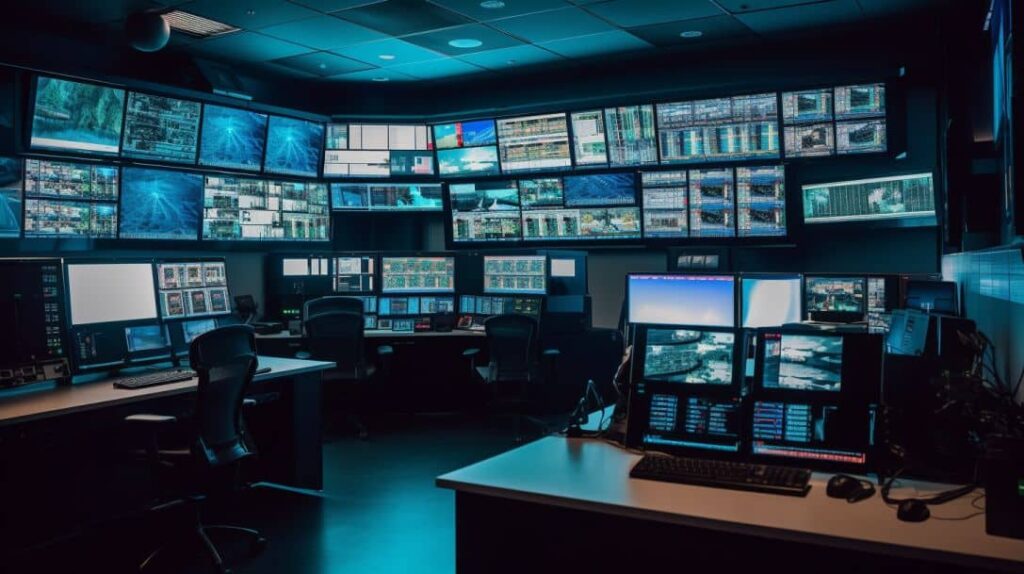
One of the biggest catalysts that has enabled security cameras to evolve beyond just surveillance is the advancement of cloud platforms and infrastructure. The cloud allows security cameras to connect to remote data centers rather than local storage and hardware. This provides cameras with virtually unlimited storage capacity, computational power for analytics, and overall enhanced functionality.
The cloud also facilitates easy centralized management of multiple cameras across locations. Cloud connectivity enables advanced capabilities like:
- Remote monitoring and access from any device
- Seamless software updates and feature enhancements
- Powerful AI analytics on footage from multiple cameras
- Easy sharing of video clips and snapshots
Without the scalable storage, bandwidth, computing power and flexibility of the cloud, many of the newest camera capabilities for machine vision, analytics and integration would simply not be possible.
Major Investments Highlight Importance of Cloud-Enabled Cameras
Some recent major partnerships and corporate investments demonstrate the pivotal role the cloud is playing in shaping the future of the video surveillance industry:
- Microsoft and Genetec partnership to build a cloud-based Urban Security solution – Announced at the 2022 Smart City Expo World Congress, the companies are collaborating on a platform for city-wide monitoring, analysis and operations management.
- Siemens plans $500 million investment in a new smart manufacturing facility in Texas – The plant aims to boost production of industrial cloud technologies to meet rapidly rising demand. Networked sensors and cloud-enabled cameras will be a major focus.
- Hikvision partnership with ClassIn brings cloud-connected cameras into digital classrooms – The cameras record lessons and discussions for later review by absent students. Teachers can also review footage to improve their own educational practices.
- Scandit partners with warehouse management platform Nexus to integrate scanning/tracking cameras via the cloud – This allows automated inventory counts, search, order assembly and more based on video analytics.
- G4S warning companies against rushing into AI-enabled cameras without proper cloud infrastructure – G4S notes failed AI projects often overlook the essential role of the cloud in providing the foundation for analytics.
The Cloud Opens Up New Possibilities for Security Cameras
As these examples demonstrate, the scalable storage, bandwidth, computing ability, and flexibility of the cloud are foundational in unlocking the wider potential of cameras. The cloud also enables seamless integrations with third-party platforms for improved analytics, workflow optimization, and automation.
Companies looking to maximize their return on investment from security cameras should prioritize proper cloud connectivity and integration. With the power of the cloud, previously impossible applications of computer vision across smart cities, retail, logistics, education and more are now becoming reality.
Diverse Examples of Innovative Security Camera Uses Across Industries
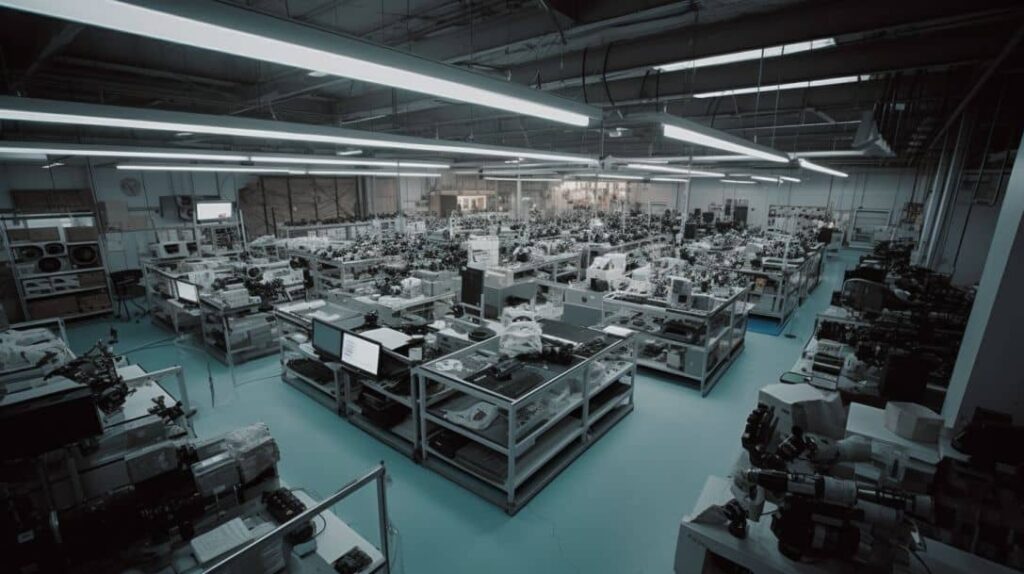
With the evolution of camera technology and cloud capabilities, companies across many industries are finding new innovative ways to utilize cameras to solve pressing business problems beyond just security. Let’s look at some real-world examples:
Retail – Avigilon Cameras Enhancing Operations at Super Dry Stores
UK-based Japanese fashion retailer Super Dry used Avigilon control center software and AI-powered cameras to gain new visibility into customer traffic patterns and merchandise planning. The video analytics now optimize everything from staffing levels to product placement, boosting sales.
IT – LiveAction’s Visibility as a Service Uses Existing Cameras
IT infrastructure company LiveAction launched a new offering called Visibility as a Service that leverages a client’s existing security cameras for network operations monitoring and troubleshooting. It ties video feeds to network infrastructure maps to detect issues.
Fire Safety – Alcatraz AI’s Computer Vision Fire Detection Camera
Alcatraz AI applies computer vision algorithms to video from standard off-the-shelf webcams to enable early fire and smoke detection. Their product called DeTektor won the International Fire & Security Expo Product of the Year Award.
Government – Eagle Eye Networks and ImmixGroup Partnership
The two companies partnered to bring cloud video surveillance and AI-enabled analytics to the public sector. The goal is to enhance crime prevention, incident response, investigations and community monitoring without exorbitant costs.
Industrial – ClanTect’s Wearable Heartbeat and Video Detector
ClanTect makes a lightweight wearable device called Ultra that uses video sensors and AI to detect worker fatigue, distress or serious medical events in harsh industrial environments. An integrated alarm alerts supervisors in real-time if issues arise.
Critical Infrastructure – Mitie Acquisition of GBE Converge
Mitie acquired GBE Converge for £27 million to enhance use of video, drones, sensors and analytics to provide remote monitoring services for critical national infrastructure sites across the UK.
Military – IDNow Transitioning Vision AI Expertise to Skills Testing
IDnow originally provided AI-powered automated video verification of customer identities. They are now applying that computer vision expertise to help the UK military screen and match recruits’ skills to appropriate careers.
Supply Chain – HID Opening Logistics Center in Ireland
HID Global recently opened a new logistics center in Ireland to meet rising demand for their secure identity technologies including access control cameras. This strengthens their supply chain capabilities in Europe.
These examples showcase the expanding versatility of modern security cameras. Companies willing to embrace new applications can gain operational visibility, efficiency, safety, and cost advantages across diverse sectors.
Unique Benefits of Infrared Cameras Across Industries
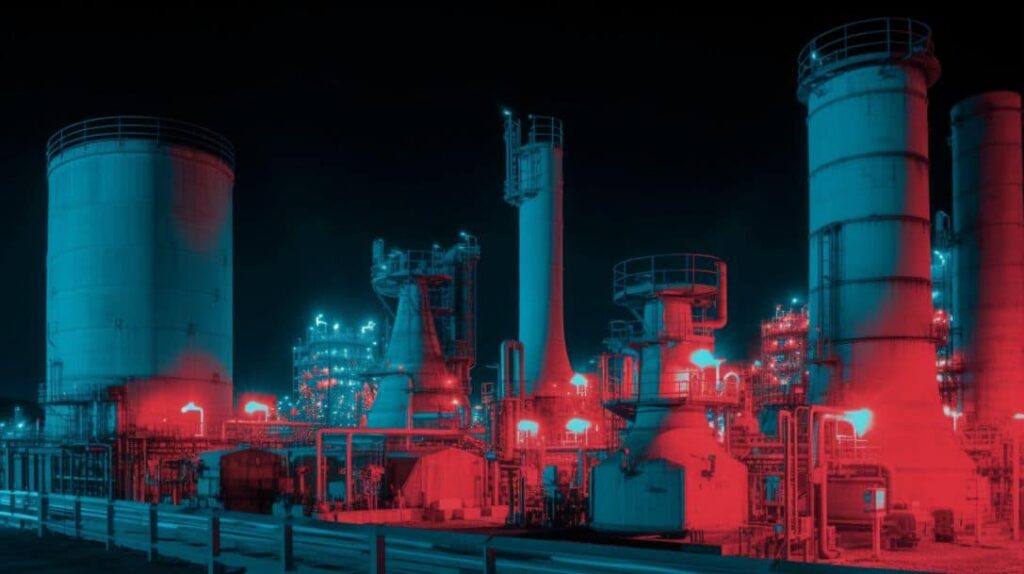
Infrared and thermal security cameras provide unique visibility benefits that make them ideal for non-security applications. Some key advantages include:
24/7 Monitoring with Total Darkness Visibility
Standard security cameras rely on ambient visible light and can only see darkness after sunset. Infrared cameras detect heat signatures and require no light, allowing uninterrupted monitoring day and night. This enables:
- Enhanced perimeter security – Continually monitor fence lines, secure areas and building exteriors that are not typically lit at night.
- Loading docks and warehouses – View clearance of goods and prevent overnight theft with zero blind spots or gaps in visibility.
- Machinery spaces – Monitor unlit equipment rooms, detecting leaks, spills, overheating and other issues.
- Parking areas – Provide full coverage of poorly lit lots, garages, and vehicle depots.
Critical Infrastructure and Hazard Monitoring
Infrared cameras are invaluable in industrial settings and critical infrastructure sites:
- Refineries, chemical plants and utilities – Pinpoint dangerous hotspots and temperature changes to prevent catastrophic failures. See through smoke, steam and other obstructions.
- Early fire detection – Identify hotspots and subtle signs of flame/smoke that may not trigger visual alarms. This enables faster response.
- Fuel tank level monitoring – Precisely measure fuel levels and detect small leaks not visible to the human eye.
- Equipment health monitoring – Identify overheating components and detect subtle performance changes indicating imminent failure.
Climate-Controlled Monitoring
Infrared cameras help maintain strict temperature standards:
- Cannabis extraction facilities and greenhouses – Ensure ideal conditions for maximum yield and prevent inventory losses.
- Pharmaceutical and laboratory storage – Guarantee stability of temperature-sensitive compounds and cultures.
- Art galleries and museums – Protect fragile artifacts from damage caused by temperature and humidity fluctuations.
Research and Public Safety Applications
- Search and rescue – Detect body heat through walls, vegetation and other barriers to locate missing persons faster.
- Wildlife studies – Gather animal behavioral insights without disturbing habitats with visible light.
Thanks to their unique attributes, infrared and thermal cameras unlock 24/7 visibility and climate monitoring even in the most challenging environments.
Critical Components Beyond Cameras for Industrial Video Systems
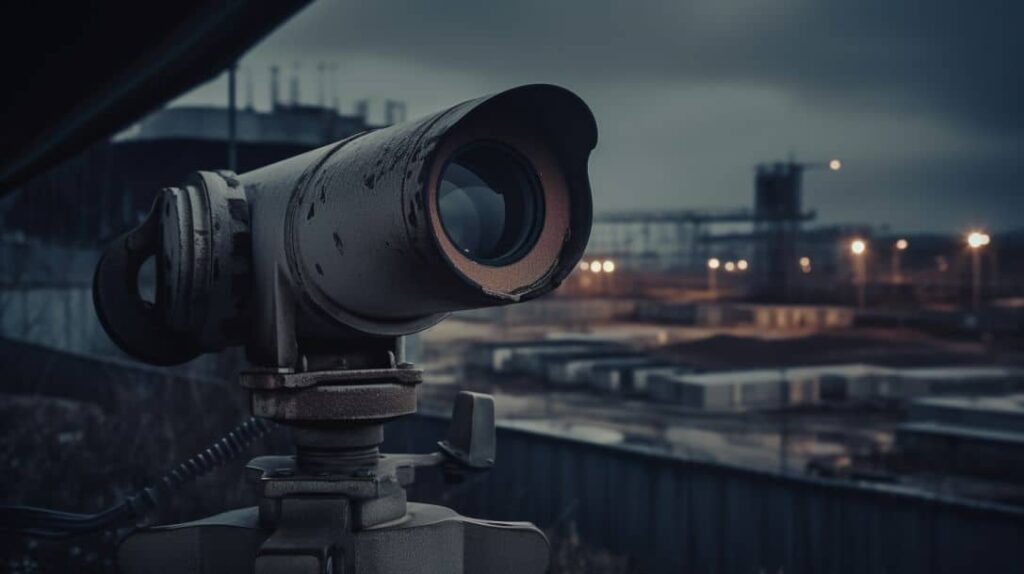
While security cameras are the core of any video monitoring system, there are other pivotal elements that must be planned for – especially in challenging industrial environments.
Ruggedized Mounts for Harsh Conditions
Cameras require rugged enclosures and mounting hardware that can withstand dust, moisture, temperature swings, vibration, and other hazards prevalent in factories, warehouses, and depots. Look for vandal-resistant models rated for outdoor use.
High-Quality Monitors
Operators need to be able to clearly view live and recorded video feeds to identify issues in real-time. High resolution LCD monitors and video walls are essential for 24/7 monitoring stations. Touchscreen stations allow easy control.
Large-Scale Video Storage
On-camera SD cards are not sufficient for permanent archiving in busy facilities. Industrial systems require high-capacity centralized networked storage in RAID configurations to retain weeks or more of footage across many cameras.
Robust Network Infrastructure
Cameras must interconnect to servers, switches, fiber lines, copper cabling, wireless access points and other networking gear across often vast distances. Proper bandwidth for 24/7 video traffic is critical.
Backup Power Systems
Clean, uninterrupted power is essential to avoid downtime. Central UPS systems and generators may be required in the event of electrical failures, which are more common in industrial settings.
A holistic approach looking beyond just the cameras is key for building enterprise-class video monitoring systems able to withstand harsh plant conditions. Expert assistance can help assess requirements and integrate all necessary components.
Key Differences Between IP and Analog Security Cameras

There are two main classes of security cameras, each with their own advantages and limitations:
IP cameras – Network-connected cameras that transmit video digitally over wired or wireless networks.
Analog cameras – Cameras that transmit video over coaxial cable in analog CCTV systems.
Understanding the core differences helps choose the right system for a facility’s needs:
Video Quality
- IP cameras capture higher resolution video – Many models support 4K and ultra HD clarity, vs analog’s low 640×480 pixel resolution.
- Analog video degrades over distances – Picture quality diminishes over coax cable lengths whereas IP video remains pristine.
Installation and Wiring
- IP cameras require less cabling – A single network cable transports video and power over PoE. Analog needs separate power and coax runs.
- Analog cameras can be simpler to install – IP networks require more configuration, but analog just plugs into a DVR.
Networking and Bandwidth
- IP cameras connect to wired and wireless data networks – This allows remote monitoring. Analog cameras can only use coaxial cabling back to a DVR.
- High bandwidth networks are needed for IP systems – Many analog cameras can operate over standard DSL internet lines.
Smart Features
- IP cameras support advanced analytics and automation – Deep learning AI and cloud integration requires IP networks. Analog lacks intelligence.
- Analog systems are limited to basic recording – IP cameras open far more possibilities for video analytics and integrations.
Cost Considerations
- Analog cameras have lower upfront costs – But upgrading old analog systems gets expensive over time.
- IP systems have higher initial investment – But scalability, flexibility and advanced analytics save long-term.
For most organizations, IP-based surveillance offers the best growth potential versus aging analog technology. But all aspects should be carefully weighed when selecting camera systems.
Key Considerations for Reliable Industrial Video Surveillance
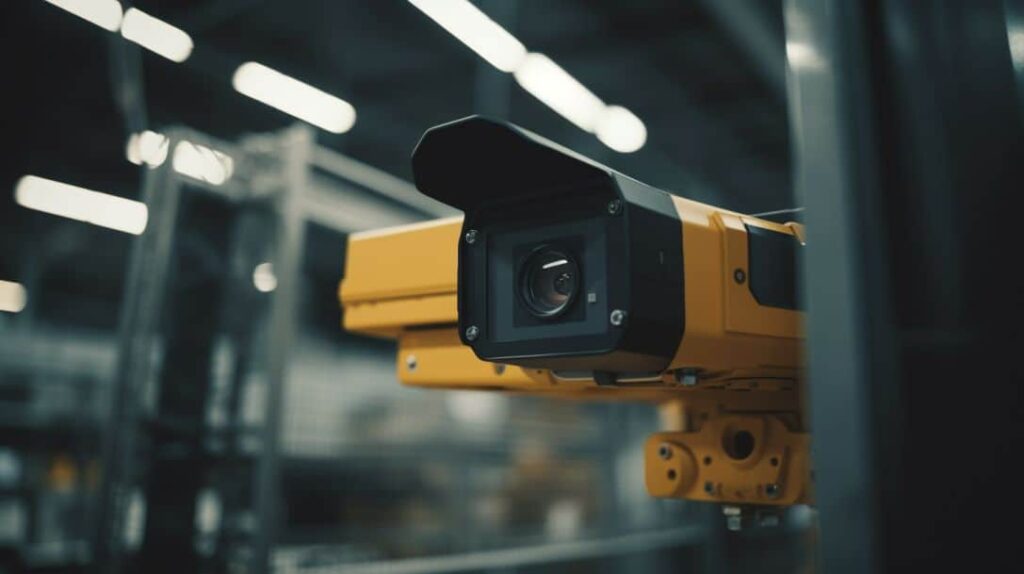
Implementing video monitoring in factories, warehouses, and other industrial facilities presents unique challenges not found in office or retail settings. Two factors in particular must be addressed to ensure reliable, effective systems – power and bandwidth.
Providing Clean, Redundant Power
Industrial sites often suffer from “dirty power” – fluctuations, surges, interference and outages that can disrupt electronics. This demands several strategies:
Uninterruptible power supplies (UPS) act as failsafe batteries to smoothly maintain voltage during outages for a period of time. Central UPS units can support multiple cameras and networking hardware.
Backup generators are necessary for longer multi-hour failures. Diesel generators should have ample fuel capacity – critical systems may require contracts with refueling services.
Power conditioners and surge protectors filter electromagnetic interference (EMI) and protect against spikes that can damage sensitive camera electronics.
Lightning protection like bonding and grounding must be implemented for exterior cameras and cabling. Nearby strikes can easily overvolt unprotected equipment.
Separate electric circuits for cameras prevent one fault from disabling the entire system. Distributed camera power avoids single points of failure.
Proper power treatment, redundancy and segregation are essential to ensure 24/7 uptime.
Providing High-Bandwidth Connectivity
Crisp, lag-free video demands substantial bandwidth, which can mean extensive wired infrastructure in large industrial sites.
Fiber optic cabling is ideal for camera backbone connections due to nearly unlimited capacity and immunity to electrical interference present in industrial settings.
Category 5e or 6 ethernet cabling provides 1 Gbps+ speeds for individual camera runs up to 100 meters. Properly shielded STP cable prevents EMI issues.
Wireless networking requires planning to avoid congestion and range limitations of WiFi. Large spaces may need a distributed mesh of wireless access points interconnected by fiber or ethernet cable.
Quality of Service (QoS) policies ensure video traffic gets priority over less critical data when bandwidth is constrained. Network segmentation also helps avoid camera traffic congestion.
Camera compression and resolution can be reduced if needed to work within bandwidth limitations. But lowering quality too far degrades monitoring usefulness.
Optimizing Industrial Video Systems for Maximum Efficiency
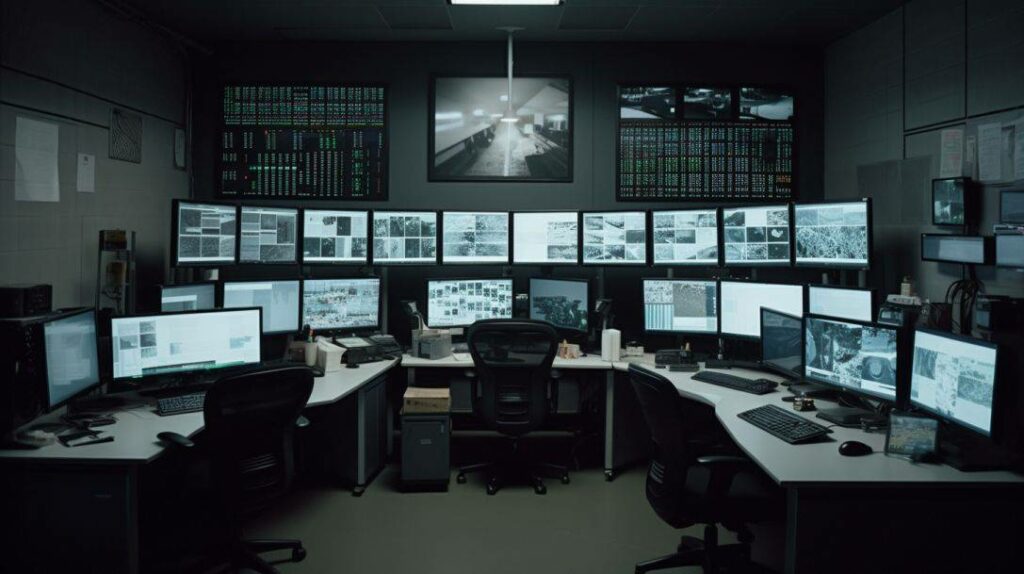
Properly designing and implementing a video monitoring system pays dividends in improved efficiency, safety and visibility across industrial facilities. Two key areas for optimization are choosing the right camera lenses and selecting robust equipment.
Selecting the Right Lens for Clear Coverage
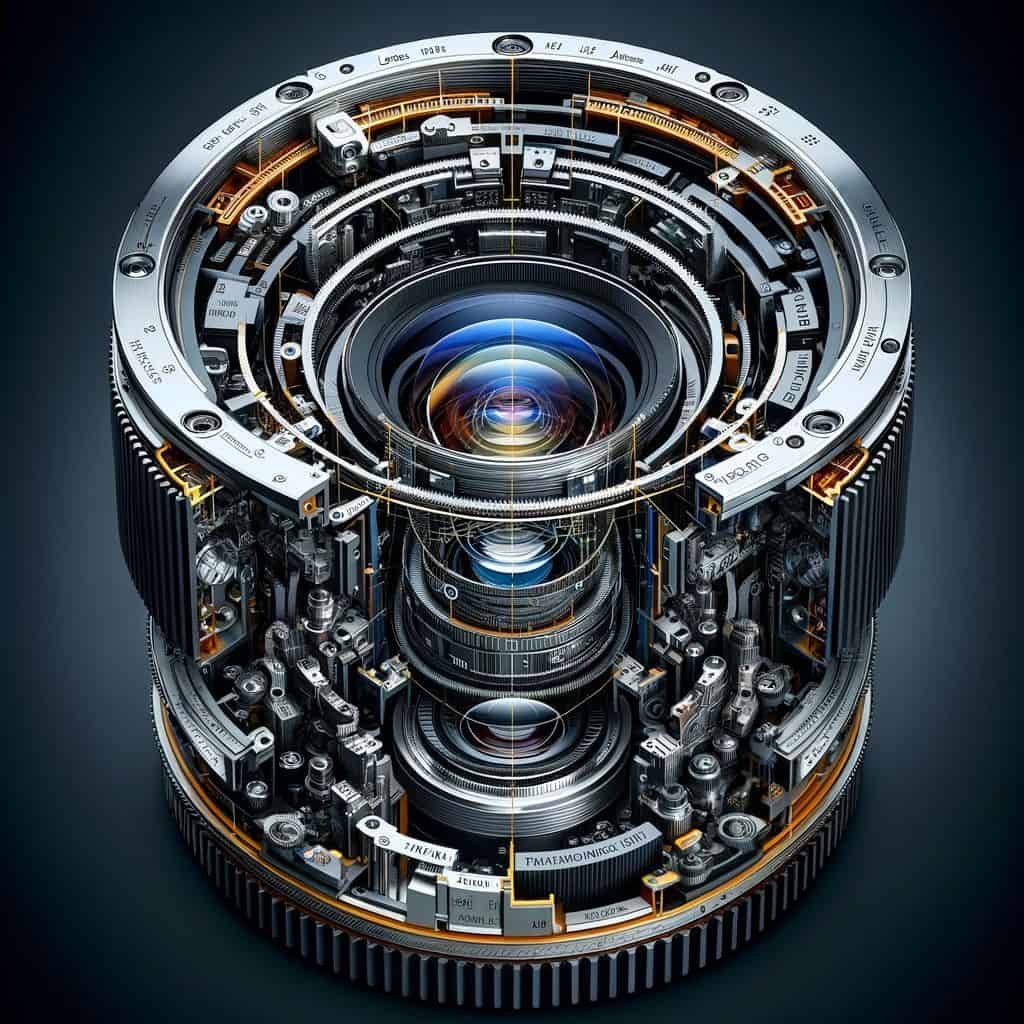
A varifocal lens provides the flexibility to adjust focal length, field of view and zoom after installation. This ensures ideal scene coverage as needs evolve. Megapixel lenses provide the ultra-high resolution today’s cameras are capable of capturing.
Fixed lenses can be a budget option for low traffic areas. But varifocal gives the adaptability crucial for large dynamic spaces.
Deploying Ruggedized Equipment Purpose-Built for Industry
The vibration, dust and temperature swings of factories and warehouses demand specialized video gear built for harsh environments. Opticom is one top manufacturer with over 50 years experience developing rugged, reliable and high-performing solutions purpose-built for:
- Petrochemical facilities – Explosion-proof cameras and enclosures certified for hazardous areas help prevent disasters.
- Cold storage and refrigeration – Heated camera housings maintain ideal internal temperatures for electronics down to -60° C.
- Steel mills and foundries – High temperature ratings allow cameras to withstand over 200°C heat near furnaces.
- Chemical and pharmaceutical plants – Corrosion-resistant stainless steel housings withstand caustic environments.
- Warehouses – Weatherproof IP66 enclosures protect against dust ingress that can impair image quality.
Deploying equipment engineered specifically to survive industrial environments ensures maximum uptime. An expert can recommend ideal cameras, lenses, mounts, housings and accessories for specific facility challenges.
Properly planning video systems with adaptable lenses, ruggedized gear and other optimization measures helps realize surveillance’s full potential for driving efficiency. The right setup provides comprehensive coverage and business insights 24/7.
With strategic network architecture, cabling and configuration, reliable connectivity can be achieved. But bandwidth needs may be vastly higher than a typical office.
Properly addressing power and network challenges is key for deploying video surveillance that performs 24/7 in harsh industrial conditions. Consult an expert to assess infrastructure needs and build a robust monitoring solution.
Conclusion: Leveraging Security Cameras’ Full Potential Across Industries
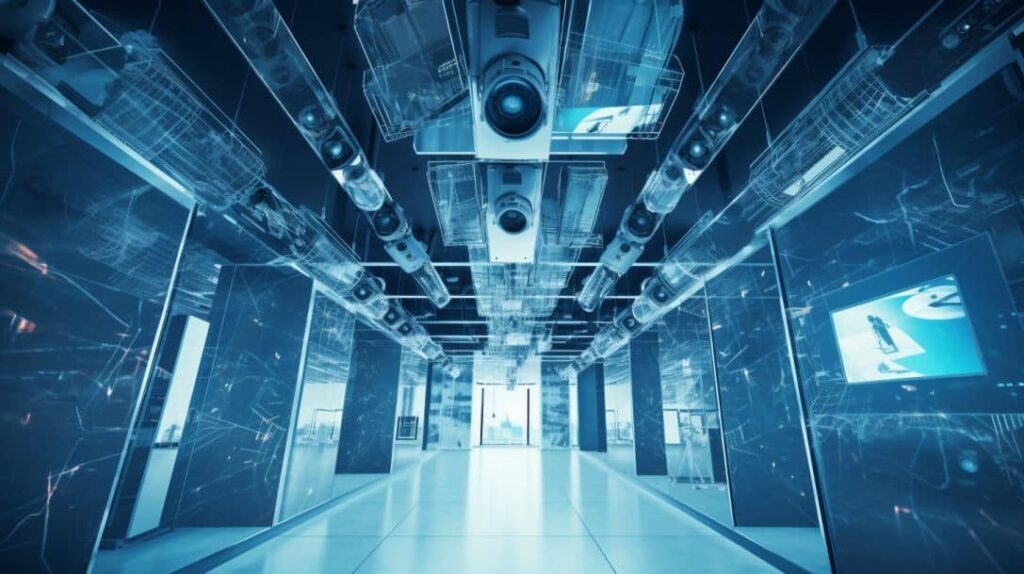
As we have seen throughout this article, modern security cameras are far more sophisticated than just a passive box that records video. Recent technological advancements like high-resolution imaging, infrared capabilities, cloud connectivity and intelligent analytics have greatly expanded the potential applications and business value of security cameras.
Organizations that embrace these innovations are finding ways to unlock new levels of efficiency, safety, cost savings, and insights across diverse sectors. For instance, retailers are using computer vision for customer traffic analysis to optimize merchandising. Manufacturers deploy specialized infrared cameras to prevent equipment failures before they cause costly downtime. Cannabis companies leverage temperature-controlled monitoring to preserve product quality and prevent losses.
And this is just the beginning. With the continued proliferation of 5G networks, edge computing, AI, and other emerging technologies, security cameras will gain even broader capabilities in the years ahead. Innovative organizations recognizing cameras’ versatility beyond security will gain key competitive advantages.
Critical Considerations for Maximizing Value
To fully capitalize on modern security cameras’ potential, proper implementation and planning are crucial. Aspects like network bandwidth, resilient power systems, ruggedized equipment, backup storage and more must be addressed – especially for industrial settings.
Working with experienced integrators ensures all components come together into a cohesive system tailored for your specific environment and objectives. The right expert can help assess your needs, design optimized surveillance architecture, handle technical challenges, and maximize your return on investment.
Realizing the Strategic Potential of Video Monitoring
In today’s fast-paced business climate, organizations need every possible edge. There remains no replacement for having your own eyes and ears on the ground. Properly designed video solutions provide unmatched visibility into facilities and operations – insights that can drive smart decisions, efficiency and growth.
Technological innovations continue to expand video surveillance capabilities far beyond basic security. Organizations recognizing and embracing the strategic potential of modern security systems will gain a key advantage over competitors.
Contact Jefferson Security Cameras Today!
Jefferson Security Cameras has over 25 years experience designing and installing state-of-the-art video surveillance solutions for top local organizations. Our experts can conduct a free site evaluation and recommend a customized system to address your specific needs.
For a free quote on feature-packed video security tailored for your environment, call (267) 662-1423 or visit https://jeffersonsecuritycameras.com today! Discover how our flexible solutions can solve your problems and take your organization to the next level.
FAQs
What are some key benefits of modern IP-based security cameras versus old analog CCTV systems?
IP cameras offer higher resolution video, easy remote access, wireless compatibility, intelligent analytics, and advanced integrations with other platforms. Analog CCTV is limited to low quality video on closed circuit wiring.
How can security cameras help improve efficiency and operations in industrial facilities?
Properly placed cameras provide live visibility into workflows, inventory, equipment, and personnel. Video analytics can detect bottlenecks, optimize routes, prevent losses, and identify issues instantly.
What additional components beyond cameras are needed for an effective industrial video surveillance system?
Rugged enclosures, reliable power supplies, fiber optic cabling, managed switches, high-capacity storage servers, and UPS backups are essential for 24/7 monitoring in harsh plant conditions.
Why are infrared cameras useful for non-security purposes?
Infrared cameras see heat signatures and require no visible light. This enables 24/7 monitoring, night vision, seeing through smoke, pinpointing hotspots and leaks, and more.
How does cloud connectivity enhance the capabilities of modern security cameras?
The cloud allows unlimited remote storage, extensive bandwidth, easy centralized management, AI analytics, software updates, and integration with other platforms.
What challenges must be addressed when implementing cameras in large industrial facilities?
Long distances, RF interference, vibration, and dirty power can hamper wireless signals, video quality, equipment longevity and uptime. Proper planning is key.


